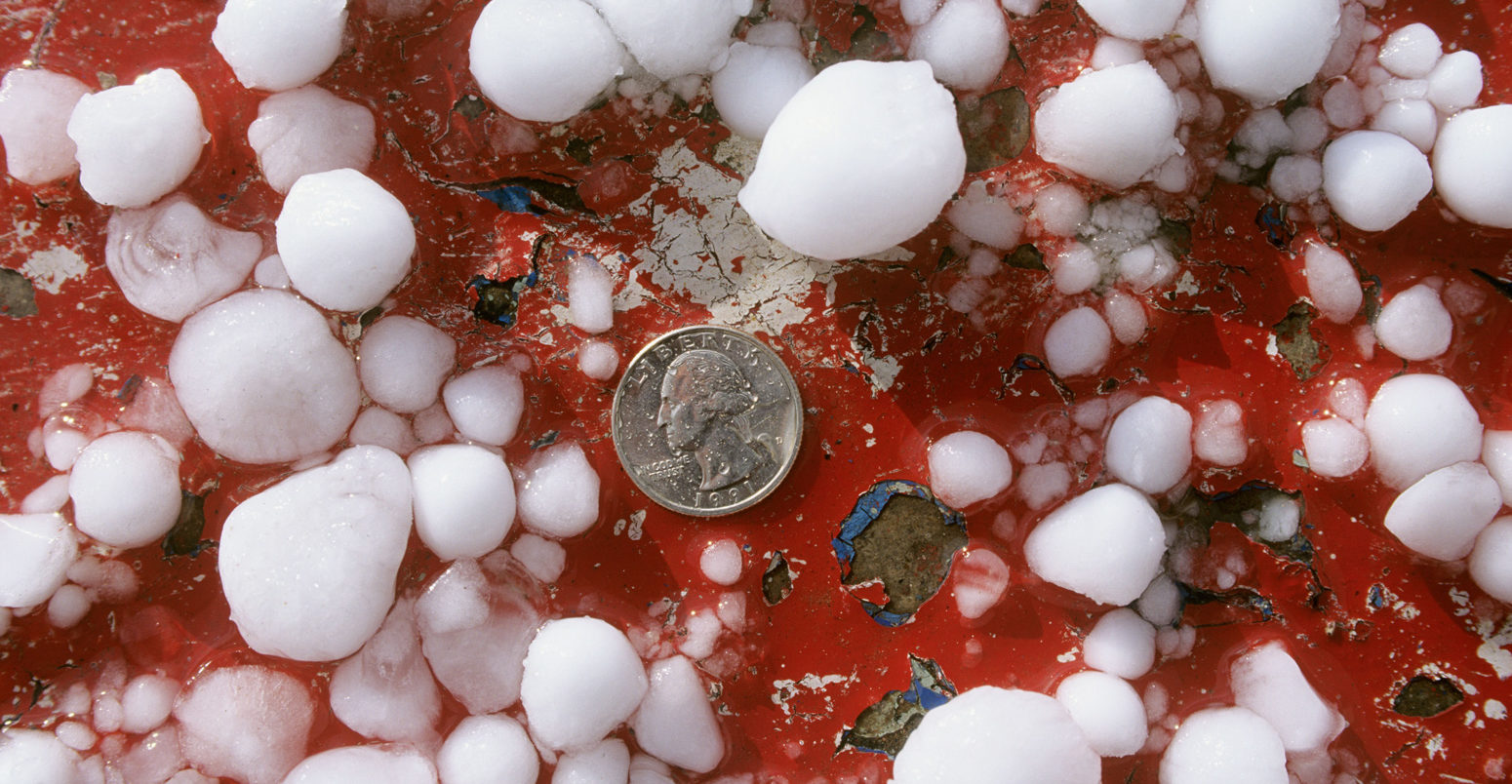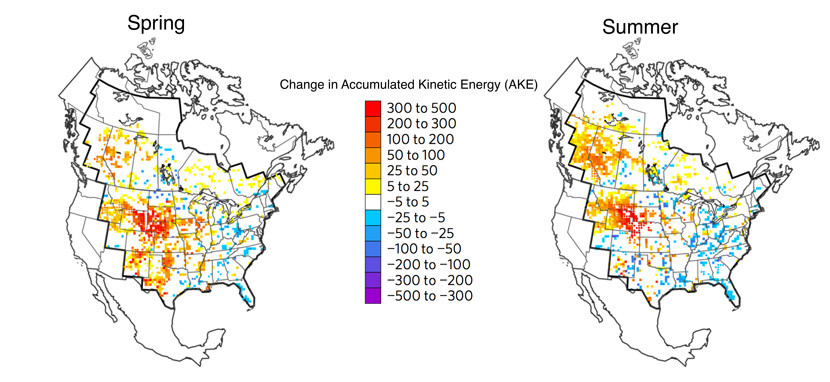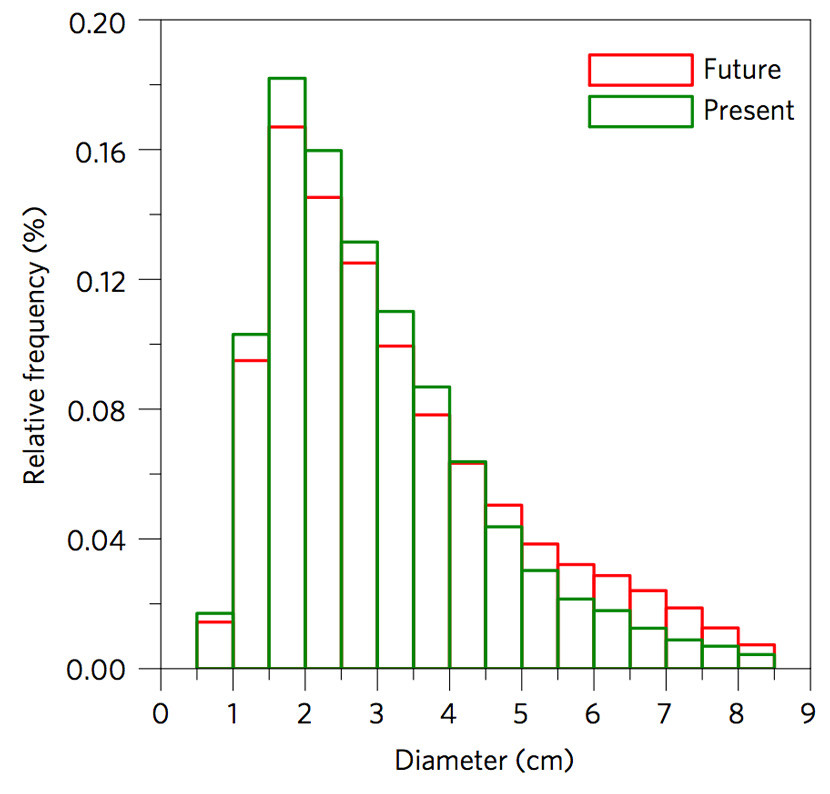
Giant hailstones to increasingly strike North America under climate change
Zeke Hausfather
06.26.17Zeke Hausfather
26.06.2017 | 4:00pmDamaging large hail “events” may become more common across the central and central-western parts of North America, concludes a new study published in Nature Climate Change.
The paper also finds that a warming climate will reduce the number of small hailstorms, as more hail melts prior to hitting the surface. However, the vast majority of hail damage comes from much rarer storms that feature large hailstones.
The changes to the climate across much of North America expected over the coming century will favour the formation of larger hail, the paper says.
Large hailstorms can be extremely damaging events. In 2016 alone, hail damage in northern Texas topped $5.5bn, with some hailstones the size of baseballs or larger.
Challenge of modelling hail
Relatively little work has been done until recently in modelling the expected impacts of climate change on hail formation. Climate models generally lack the high resolution needed to resolve small-scale events, such as thunderstorm formation, that are critical for predicting hail.
In their new paper, Dr Julian Brimelow, a physical sciences specialist at Environment and Climate Change Canada, and his co-authors combine downscaled climate model data from the North American Regional Climate Change Assessment Program with a cloud model called HAILCAST that models the physics of hail growth and melting.
The paper examines a wide range of climate models. Ultimately, it chooses three that best match historical hail conditions and other climate variables across North America. They use the climate model data as an input to HAILCAST to model the frequency and size of hail during two periods: the climate of 1970-2000; and the future climate in 2041-2070 under a business-as-usual warming scenario.
Bigger, but less frequent
Compared to the current climate, the researchers found that both spring-time and summer-time days with hail would see a modest decrease in most locations, but that hailstones would be larger on average when hail did occur.
This is due to a combination of two factors. In a warmer climate, smaller hailstones would tend to melt before reaching the surface, increasing the number of “hail aloft only” days. A warmer world would also lead to more thermodynamic energy in the atmosphere, with stronger updrafts and more thunderstorms contributing to large hail sizes.
The figure below, adapted from the paper, shows the expected change in the accumulated kinetic energy of hail in both spring and summer. The more the kinetic energy there is in hail, the greater likelihood of damage to crops and property. As hailstone sizes increase, the kinetic energy increases exponentially, so that a 4cm golf ball-size hailstone has about 100 times more energy than 1.5 cm hailstone.

Change in hail accumulated kinetic energy between 1971-2000 and 2041-2070 in spring (left) and summer (right) in joules per season. Adapted by Carbon Brief from the paper’s figure two. Source: Brimelow et al. (2017)
Even though there may be fewer hail days in the future in many regions, the increase in average hailstone size results in a greater amount of accumulated kinetic energy across much of central and western North America. Only in the warmer southeast does the decrease in frequency outweigh the increase in size.

Projected change in spring hail diameter between 1971-2000 and 2041-2070 in the southern temperate forest ecoregion. Adapted by Carbon Brief from the paper’s figure five. Source: Brimelow et al. (2017)
The example in the figure above shows how smaller hailstones will become less frequent in the future, but larger diameter hailstones will become more common. This relationship generally holds true for both spring and summer across most of the regions studied by the researchers.
So what do these changes in hail frequency and size mean for residents of the US and Canada? Brimelow says:
“It really depends where you live. If you live in the southeast US, you might feel a sense of relief as you will likely receive less hail. But if you are a farmer in the high prairies of the US, I wouldn’t take much solace, because our research suggests that the potential for hail damage may increase in the future. If you are in the northeast US, odds are things won’t change that much.”
The researchers also found that a changing climate will shift peak hail season to be around a month earlier than today, especially for midwest and northwest regions.
Rest of the world
While this study has strong implications for the US and Canada, it also offers some insights for other parts of the world. Regions that are moisture-limited, similar to the central and central-western parts of North America, will likely have comparable dynamics driving larger hailstone formation, while warmer regions may see less hail due to more hailstones melting before reaching the surface.
However, there is no global observing network for hail, as there is for rain. Therefore, little data in hail frequency and intensity exists globally, outside of a few specific regions that have monitoring programmes.
There are some ongoing efforts at using newly available satellite remote sensing data to try and measure hail from space. These approaches are limited, however, as they can measure whether a storm has hail present, but not if it reaches the ground.
This new study’s results – that a warmer world may have less frequent but more intense hail – follows a familiar pattern researchers have found with other extreme events, such as hurricanes. It is a reminder that future climate change impacts on extreme events will be complex, often affecting different regions of the world in very different ways.
Brimelow, J. et al. (2017) The changing hail threat over North America in response to anthropogenic climate change, Nature Climate Change doi: 10.1038/nclimate3321
-
Giant hailstones to increasingly strike North America under climate change

